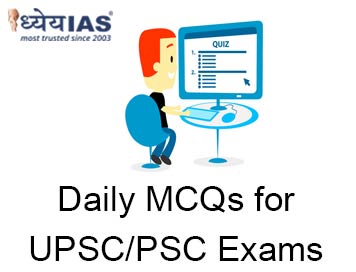Home > Daily-mcqs
Daily-mcqs 28 Apr 2025

Q1:
Which of the following statements regarding the Surrogacy (Regulation) Act, 2021 are correct? How many of the above statements are correct?
A: Only one
B: Only two
C: Only three
D: All four
Answer: B
Explanation:
Statements 3 and 4 are correct. The Surrogacy (Regulation) Act, 2021 permits only altruistic surrogacy, explicitly banning commercial surrogacy to prevent exploitation. It also mandates mandatory registration of all clinics providing surrogacy services.
Statement 1 is wrong because commercial surrogacy is banned.
Statement 2 is incorrect because the Act permits surrogacy access only to widows or divorcees aged between 35 and 45 years—not never-married single women.
Thus, only two statements are correct.
Q2:
Which of the following statements about the newly developed HPV test kits are correct? How many of the above statements are correct?
A: Only two
B: Only one
C: All four
D: Only three
Answer: D
Explanation:
Statements 1, 2, and 4 are correct. The HPV test kits are indigenously developed by Molbio Diagnostics and Mylab Discovery, use chip-based RT-PCR technology, and are designed to be affordable, particularly for resource-constrained settings.
However, statement 3 is incorrect: these kits are specifically designed for point-of-care testing, enabling decentralized and faster cervical cancer screening outside major hospitals.
Thus, three statements are correct.
Q3:
Consider the following statements: Statement I: Heavy metal pollution can cause respiratory disorders through inhalation. Which one of the following is correct?
Statement II: Particulate-bound heavy metals released into the atmosphere can travel long distances before deposition.
A: Both Statement-I and II are correct and II explains I
B: Statement-I is correct but Statement-II is incorrect
C: Statement-I is incorrect but Statement-II is correct
D: Both Statement-I and II are incorrect
Answer: A
Explanation:
Both statements are correct.
Heavy metals released from industrial units, smelters, and waste incineration bind to airborne particulates. These particulate-bound metals can travel long distances, entering the respiratory system of humans and animals upon inhalation, causing respiratory and systemic health issues.
Thus, II explains I: long-range atmospheric transport of heavy metals leads to inhalation exposure.
Q4:
Consider the following statements about Hypersonic Weapons and Technologies: How many of the above are correct?
A: Only two
B: Only three
C: All four
D: Only one
Answer: A
Explanation:
Statements 1 and 3 are correct.
Q5:
The discovery of Labeo uru and Labeo chekida in the Western Ghats is significant for which of the following reasons?
A: They are the first species of freshwater fish found in India.
B: They are endemic to their respective river systems, emphasizing the biodiversity of the Western Ghats.
C: They are the first fish species to be discovered by the Centre for Peninsular Aquatic Genetic Resources.
D: Their discovery resolved the issue of overfishing in the region.
Answer: B
Explanation:
The discovery of Labeo uru and Labeo chekida highlights the unique biodiversity of the Western Ghats, as both species are endemic to specific river systems (Chandragiri and Chalakudy rivers, respectively). This underscores the ecological richness and the presence of species that are confined to particular regions, underlining the Western Ghats as a biodiversity hotspot.